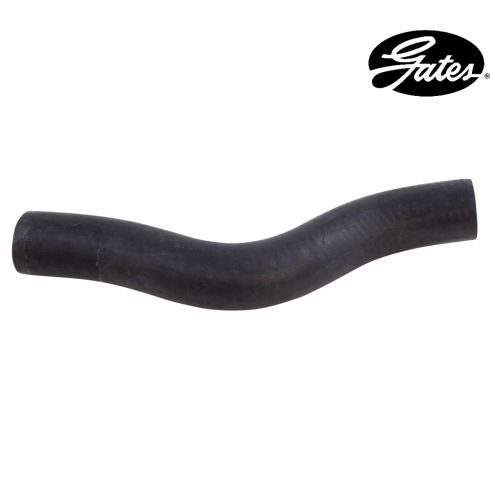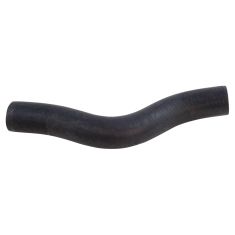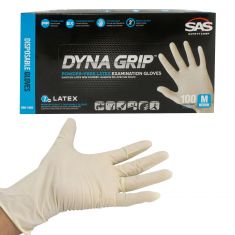Brought to you by 1AAuto.com, your source for quality replacement parts and the best service on the Internet.
Hi, I'm Mike from 1A Auto. I hope this how-to video helps you out, and next time you need parts for your vehicle, think of 1AAuto.com. Thanks.
In this video, we're going to show you a radiator replacement. This is a 2003 Honda Civic. This is the same basically for 2001 to 2005 Civic and Acura EL with the four-cylinder engine. Items you'll need include a new radiator from 1AAuto.com, 10 millimeter wrench or socket ratchet extensions, Phillips and flat blade screwdrivers, curved, needle nose and standard pliers, drain pan and funnel, additional anti-freeze, and some penetrating oil.
There are four clips at the top to remove. Okay, at the front of the wheel well, on each side, is a 10 millimeter bolt right here. You need to remove, and again, this is on each side. Also on each side, you'll want to pull the wheel well down. Underneath, there should be a series of these push pins, just like the top. Release each side just by pulling firmly. Then, you may have to just pull a little bit and they'll come off.
Loosen your negative battery cable with a 10mm wrench. Pull it up and off and remove it. I've got a larger wrench to hold on to the bolt from this side. Then loosen it up and disconnect your positive cable second, pull it off, and you just kind of push them down so they don't come back and hit the battery. 10 millimeter bolt to remove here, and then a 10 millimeter nut here.
Your drain is right under the center. There's actually a little hole right under this cover, and you can see it right here, and I'm just going to use a little pair of pliers just to help us get that tight plug going. Okay, want these to turn a little bit. Just turn it out slowly, and obviously you don't want to do this while the engine is hot.
Once you get it draining, we'll move the radiator cap to allow air in and allow it to drain.
We're lucky enough. I did spray it down, but the way it was put together is actually just a hook at the bottom, so you can unhook that and pull the retainer up and off. Then, this little protective cover comes up and off as well. Now you can lift your battery up and out. Remove the rest of your battery retainer.
There's a 10 millimeter bolt holding the reservoir right here. Remove the bolt with your socket, and ratchet, and extension. Lift it up and out, and just un-clip the hose as you go. Okay, there's just a little wire clip. Sometimes you can actually just use your fingers and pull it off towards the bottle, and then a pair of pliers will help you just break this hose loose. Then twist and pull it off.
We're going to remove this 10 millimeter bolt to remove the ground strap and get it out of the way, then use pliers to pinch the clamp, remove this hose, and pull it up out of the way. Then, there's two 10 millimeter bolts that hold the fan assembly: one here, and then one back over here. Then you want to disconnect the connection as well. Just a tab here to press. Sometimes you pull this. It should slide down and off, but press the connector and disconnect.
10 millimeter socket with the ratchet extension. Pair of pliers, squeeze the clamp, pull it back, twist the hose to break it free, pull it off. You may want to have a drip pan underneath, just to make sure no coolant comes out and drips on the floor. Now we'll remove the two bolts that hold the fan. Anything that you can do to give yourself a little more space, which one thing is to disconnect this coolant temperature sensor. Just has a tab on the side. Press the tab and we'll pull it off. I just pulled the hose up out of the way.
The fan pulls up, and then you can slide it some to the side. You may have to reach down and push your lower hose a little bit. It's just a matter of working it out.
Your drain is right under the center. There's actually a little hole right into this cover. You can see it right here. We're just going to us a little pair of pliers just to help us get that going. Just turn it out slowly, and obviously you don't want to do this while the engine is hot. Once you get it draining, remove the radiator cap to allow air in and allow it to drain.
Remove the lower radiator hose from the engine. Pinch the clamp with pliers, and pull the clamp down and off. Usually you can twist the hose to break it free. It's good to have a drain pan underneath just in case any comes out, but no coolant should come out.
Now we want to disconnect the transmission coolant lines here and here. You definitely want a drain pan underneath for these. For these clamps, it's best to have curved pliers or a big set of needle nose pliers. I'm sure Honda has some special set of hose clamp pliers, but squeeze and pull the clamp off. Same thing here. Go from the top, squeeze, pull the clamp off. Grab a regular set of pliers. Make sure you can spin the hose a little bit. Twist it free and pull them off. Again, have a drain pan underneath.
Disconnect the left hand fan here. Just press on the top and pull out the connector. Now, remove six 10 millimeter bolts, two that hold the top of the fan in place, and the two bolts that hold the condenser, and two 10 millimeter bolts that hold the radiator brackets. Just remove the brackets so they don't get lost.
You want to remove this wiring harness clip here, so use a small pair of pliers. Squeeze the teeth here and push it through. Now you can start to pull the fan up and out until you get to here, and there's another couple connectors that are clipped to the fan. This larger one, press this clip here, and then you should be able to pull it off. They're always rusty though, so they don't really like to come off. If you can't get those off the bracket, as in our case, the Phillips screw that holds the bracket on.
Remove this little clip here to free that hose. Pliers, squeeze as you pull up. With the radiator recovery hose out and this hose out, you can start pulling the radiator up. You'll need to pull your transmission lines through, and just make sure it doesn't get caught on anything. Manipulate your hoses so that everything comes out. Remove the hoses.
Regular pliers for the main hose here. Pull it up and off. Again, long needle nose pliers. Nice and big. Pull these clips up and off. Note the position of these clamps, this is to the bottom, to the outside. Try and get as much fluid out of the main tank as you can. You can just kind of block this one up and dump that into your coolant drain pan. Then to get the transmission fluid out of these ones, just block your main tank and dump it out. Get as much out as you can. Remove your upper radiator hose and just the overflow hose.
Old radiator that we've removed from the vehicle; new one from 1A Auto. Everything's the same. Remove the shipping protectors and we can install it. Get back on the road. Remove the cushions from the bottom of the old radiator and put them back into the mounting points in the frame. Replace the hoses, just guide those here. We'll take care of the upper ones once we have it installed.
Okay, put your radiator down in. Slide that hose down around the brace and put these two down right here. Just carefully lower your radiator. Try not to damage the fins, and then you can just kind of reach down, feel those pins, and get them into the cushions. Start here. Clip this hose in. And then the shorter hose goes through the passenger side. The longer hose goes through the driver side. Then the main radiator hose. Sometimes you can get this clip to lock in place, and then you just push up on the tab and it locks. Take that protector off. Put your upper hose on and reset the clip.
Slide it down a little bit. Grab our harness with the metal bracket and attempt to reinstall that. Install this clip and slide it down in. Make sure the posts at the bottom go into the holes. Install your two mounting nuts. Tighten these up, 10 millimeter socket or a ratchet. We can then reconnect the harness, then our radiator top mounts. Now, our condenser mounts. Tighten them all up.
Two pegs on the bottom here go down into the holes here. Pull the coolant hose and your lead up and out of the way. Put your fan down in kind of diagonally.
Just a matter of push on the lower hose a little bit, and continue to feed it down in. Then, this upper corner, you just have to get around the brace. To get this around, just move it out a little bit. A little bit of force, push it in behind, and then it kind of goes down in. Make sure this hose that goes to the coolant bottle's out of the way. Then you just have to kind of lift it up and try to feel for, you can kind of reach down there, feel one of the pegs, feel for the hole, and get it to slide down in place. Once you do that, the holes should line up pretty well with the holes in the radiator to mount. Connect the connector. Then, this bolt goes in. 10 millimeter socket and ratchet with an extension, just tighten them up. Plug in your coolant sensor. Put your hose back on, and refit the clamp. Put your clamp strap back into place.
You may not need to take off the ground strap but ours was in kind of rough shape so we didn't want to hurt it anymore. Put the clip in place, hose down on. Again, a lot of times you can just use your fingers on this clip. Sometimes, you might want to use a pair of pliers. Lower it down in place, clip the hose in as you go. There, this one goes in there. Down in, and then clip this in up here.
Battery in place; put this down in. The hook goes down and in. Reinstall your 10 millimeter bolt, and tighten it up. Reconnect your positive cable first and then your negative cable. Tighten up, and tighten.
Bumper cover back in place. Make sure you go underneath the latch lever, and end up on the headlights. Then put these clips back in to hold it in place. Reinstall this 10 millimeter bolt on each side. Once the bolt's back up in, push your fender, inner fender, or in this case, what's left of the inner fender, up and in.
Okay, so there should be a bunch of clips in here, but they're all missing from this car, so we're going to kind of put it back together the way it came apart, using some wire ties, and just secure the bottom.
We are going to refill the radiator directly first. I like to recycle the coolant. Never as much comes out as you need to fill it anyways, so you generally can use your old coolant and then also augment it with fresh coolant, but if you put a piece of a T-Shirt in and then pour your old coolant in, that will filter most of the dirt out of it. It takes a little while to drain through the tee shirt but it works. That's what we filtered out of the old coolant. We'll fill it up the rest of the way with good fresh coolant. You want to use a 50/50 mix.
You can buy coolant two ways: You can buy it full strength and you have to dilute it, or you can also buy it premixed. We'll fill the radiator first, and then we'll fill the overflow bottle. Then fill it. After you do a repair like this, it's good idea.
Fill it, run your car for a little while, check the level, run your care for awhile again and just keep checking the level the first few times you drive the car.
Refill your radiator fluid. We are going to refill the radiator directly first, and I like to recycle the coolant. Never as much comes out as you need to fill it anyways, so you generally can use your old coolant, and then also augment it with fresh coolant, but if you put a piece of a T-Shirt in, and then pour your old coolant in, that will filter most of the dirt out of it.
It takes a little while to drain through the T-Shirt, but it works. Obviously, make sure you have your drain closed.
Okay, you can see that's what we filtered out of the old coolant, and we'll fill it up the rest of the way with good, fresh coolant. You want to use a 50-50 mix. You can buy coolant two ways. You can buy it full strength and you have to dilute it, and you can also buy it pre-mixed.
We'll fill the radiator first, and then we'll fill the overflow bottle, and then fill it. And after you do a repair like this it's a good idea to fill it, run your car for a little while, check the level, run your car for a while again, and just keep checking the level the first few times you drive the car.
Thanks for tuning in. We hope this video helped you out. Next time you need parts for your car, please visit 1AAuto.com. Also check out our other helpful how-to and diagnosis videos.










